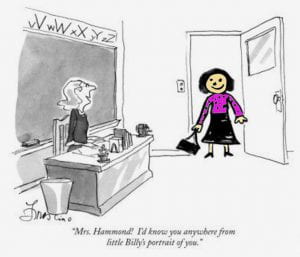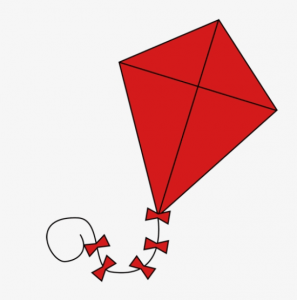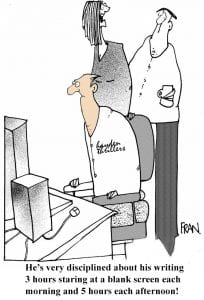 What makes a good read? Surprises and lots of them. OK, what do I mean by “surprises?” Surprises are out-of-the-blue moments that interrupt the flow of the novel and take it, or a character, in a different direction. Too many surprises and they are not surprises anymore. That’s why I only use a few, and only as necessary to enhance the plot. In my novel, the end chapters reference the kind of surprises that we enjoyed as children at Christmas time. Something like this;
What makes a good read? Surprises and lots of them. OK, what do I mean by “surprises?” Surprises are out-of-the-blue moments that interrupt the flow of the novel and take it, or a character, in a different direction. Too many surprises and they are not surprises anymore. That’s why I only use a few, and only as necessary to enhance the plot. In my novel, the end chapters reference the kind of surprises that we enjoyed as children at Christmas time. Something like this;
[“Thank you,” says Rian. “I have another surprise for you too.”
“Oh?”
“Please close your eyes.”
My senses peak. I hear the slap, slap of halyards against the yacht mast and I’m reminded of the tap, tap of Sweetman’s cane at The Rock Hotel, though that was a lifetime ago.
Seagulls squawk. I’m getting hot and the anticipation is killing me. Then, high heels come clacking across the sandstone terrace, getting louder. A shadow darkens my eyes and a tender arm wraps around my neck. The kiss is sweet and soft and the air wafts with perfume; a sexy mix of jasmine and vanilla. My mind is alive with intrigue.
“Who?” I ask.
“It’s been a while,” she replies. The voice is lilting and familiar, yet I can’t place it. I dive inside my memory banks, but they are empty except for the hint of a French accent. Was she in Paris? Damn, I used to recall names with ease and am about to ask for a clue when she says, “You can open your eyes now.”
I look up. Golden hair cascades in the sun and her face is shadowed under an old straw hat, its tattered red ribbon fluttering in the breeze. My eyes adjust and my mind catches up.
“Claudine, what a surprise and, I must say, a pleasure too.”
“My name is now Chloé Dupont,” she laughs.
“It’s been a long time. You’ve changed,” I add.
She smiles and wags a finger asking, “How have I changed?”
“You look more beautiful than ever, and happier too.” She giggles and kisses me again.
“Another glass please, Rian,” I say. “Let’s celebrate Watershed with our new guest, the lovely Chloé Dupont.” The day seems brighter. She rests her glass, tosses her hair and hands me a parcel.
“A small gift for you,” she chuckles.
“You shouldn’t have,” I protest.
Her reply puts me in my place when she says, “It’s better to give than receive.” I like that and must remember it.
The Christmas wrapping is enticing and topped with a large, yellow bow.
“I wonder what this could be?” I reply, shaking it in the way I did as an excited young boy on Christmas Eve. I loved to see the present wrapped and stacked beneath the family tree, and try to guess the contents of each one—perhaps a toy rifle for me to fight off the enemy, or a sword to cut off their heads? Better still, the whole outfit—a Lone Ranger suit, complete with mask and pistols? I made several attempts to discover the wrapped secrets. My parents never approved, but Chloé encourages me.
She laughs, “Can you guess what it is?”
“It feels solid,” I say. “A strange shape, rounded at each end.”
“Just a small keepsake,” she adds.]
I guess you want to know what the surprise is? Aha, wait for the book 🙂

 It can take 21 months or more to cut a diamond into sparkling perfection. Rushing the process could lead to excessive diamond wastage, unnecessary ugly inclusions and poor shaping. The Diamond cutting business is a prime example of an industry in which “Slow and Steady” wins the day. The same applies to editing and polishing a manuscript. I, for one, have been too keen to take my rough manuscript and hoped it would pass the keen eyes of an accomplished literary agent, only to realise too late that the work needed many more months of fine revision. My humble experience has taught me to not rush the process, and take as long as it needs to make it ‘shine.’ With my first book, 3 WISE MEN, I was not happy until about a year after the first version; with my new book, it has taken a similar length of time to get feedback and re-work the ‘final’ draft. I am so pleased that I slowed down the revision process and hope my readers will be too. A good red wine needs to be opened and sit for a while, allowing it to “breathe”and soften the flavours and release enhancing aromas. Writing is no different? No. JD Salinger took 10 years to write Catcher in the Rye, and the first Harry Potter instalment was six years in the making. Time heals many things and writing is no different.
It can take 21 months or more to cut a diamond into sparkling perfection. Rushing the process could lead to excessive diamond wastage, unnecessary ugly inclusions and poor shaping. The Diamond cutting business is a prime example of an industry in which “Slow and Steady” wins the day. The same applies to editing and polishing a manuscript. I, for one, have been too keen to take my rough manuscript and hoped it would pass the keen eyes of an accomplished literary agent, only to realise too late that the work needed many more months of fine revision. My humble experience has taught me to not rush the process, and take as long as it needs to make it ‘shine.’ With my first book, 3 WISE MEN, I was not happy until about a year after the first version; with my new book, it has taken a similar length of time to get feedback and re-work the ‘final’ draft. I am so pleased that I slowed down the revision process and hope my readers will be too. A good red wine needs to be opened and sit for a while, allowing it to “breathe”and soften the flavours and release enhancing aromas. Writing is no different? No. JD Salinger took 10 years to write Catcher in the Rye, and the first Harry Potter instalment was six years in the making. Time heals many things and writing is no different. Here’s a question I have to ask myself often—how well do I know my characters? Yes, I can describe them (features like hair, makeup, dress, etc.) but do I really know them? A few years ago I met a long-lost half-brother. We talked and he was quiet, reflecting on a father he hardly knew. But, I never understood him until he told me about a letter he had written to his father. The response he got, and the way he reacted, gave me clues about the depth of his feelings. When I saw my half-brother walk away, he had the same gait as my father and my eyes were opened fully to his character. In writing, there is that elusive search to reveal a character by his or her actions, rather than through description. They give away their true identity with a gesture, body position, speech and response. In my latest novel, many of my characters are build upon people I know quite well, but others have to be fabricated from observations, etc. My goal is to have none of my characters appear flat (as in this cartoon). And, here’s a secret, one of the key characters in my book is a little like me—Oh, very well, a lot like me!
Here’s a question I have to ask myself often—how well do I know my characters? Yes, I can describe them (features like hair, makeup, dress, etc.) but do I really know them? A few years ago I met a long-lost half-brother. We talked and he was quiet, reflecting on a father he hardly knew. But, I never understood him until he told me about a letter he had written to his father. The response he got, and the way he reacted, gave me clues about the depth of his feelings. When I saw my half-brother walk away, he had the same gait as my father and my eyes were opened fully to his character. In writing, there is that elusive search to reveal a character by his or her actions, rather than through description. They give away their true identity with a gesture, body position, speech and response. In my latest novel, many of my characters are build upon people I know quite well, but others have to be fabricated from observations, etc. My goal is to have none of my characters appear flat (as in this cartoon). And, here’s a secret, one of the key characters in my book is a little like me—Oh, very well, a lot like me! “The more I listen to (literary) agents the more I feel like a ribbon on a kite. Which way does the wind blow today?” Many will identify with this comment. After all, one day you Query Letter is not up to the task, the next your word count is too low; another day you chose the wrong sub—genre, and the next you made a grammatical error.
“The more I listen to (literary) agents the more I feel like a ribbon on a kite. Which way does the wind blow today?” Many will identify with this comment. After all, one day you Query Letter is not up to the task, the next your word count is too low; another day you chose the wrong sub—genre, and the next you made a grammatical error. A New Zealand school dumped Shakespeare and replaced him with magazines in a bid to get students through their external exams. The change, believed to have been at Aorere College in Papatoetoe about 10 years ago, did not last because the college’s English teachers rebelled against it. But an Auckland University researcher who has written about the incident in her doctoral thesis,
A New Zealand school dumped Shakespeare and replaced him with magazines in a bid to get students through their external exams. The change, believed to have been at Aorere College in Papatoetoe about 10 years ago, did not last because the college’s English teachers rebelled against it. But an Auckland University researcher who has written about the incident in her doctoral thesis,  I came across this quote during research for my new book:
I came across this quote during research for my new book: